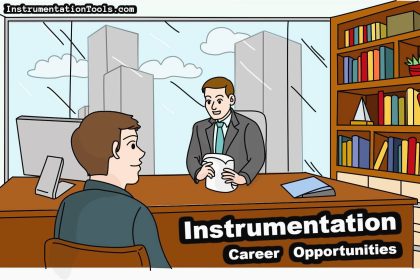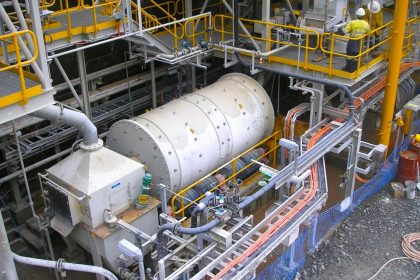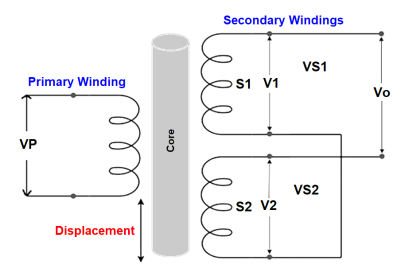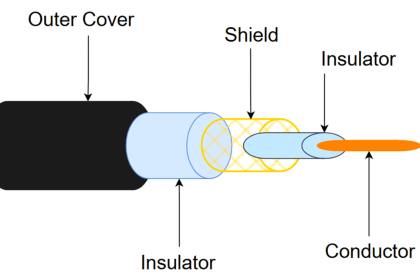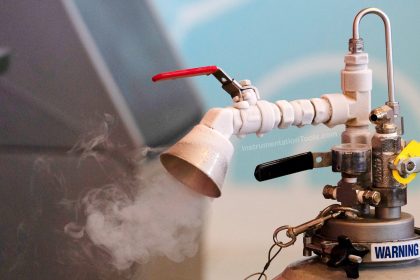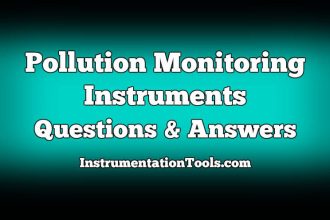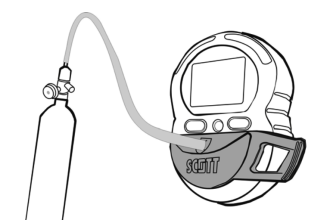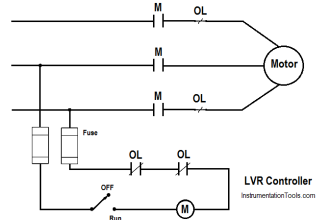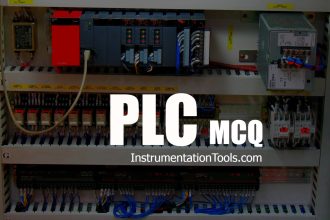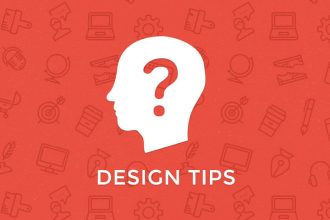Viscosity
Viscosity is a distinctive property of fluids. The viscosity of a liquid is a measure of its resistance to deformation at a given speed.
For liquids, viscosity corresponds to the natural concept of “thickness”. For example, the viscosity of syrup is above the water.
Viscosity is considered as a measurement of the frictional force that appears between neighboring layers of fluid that are in relative motion. For example, when a fluid is forced to pass through a tube, it flows faster near the axis of the tube than near its walls.
Factors that influence the viscosity measurement are temperature, time, and shear stress.
Viscometer
Several methods are used to measure the viscosity of fluids. These are generally based on one of three phenomena
- moving surface in touch with a fluid.
- object moving through a fluid.
- fluid flowing througha resistive component.
The above phenomena are the basis for the induction of three major viscometers in the industry. Viscometers are classified as below.
Types of Viscometers
A viscometer is a piece of equipment for measuring the viscosity of a fluid. There are three basic practical techniques for determining the viscosity of a Newtonian liquid
a) Capillary viscometer.
b) Rotational viscometer.
c) Falling Ball viscometer.
Capillary Viscometer
The most common viscometer among the few other capillary tube viscometer is the Ostwald viscometer, measuring the flow of the liquid through the tube.
The simplest design of capillary viscometer type of model is the Ostwald viscometer. As shown in the below figure, the viscometer is filled with the solution to be evaluated up to the upper level, or mark A, then the fluid is sucked past the mark of the bulb through the capillary tube, up to mark B.
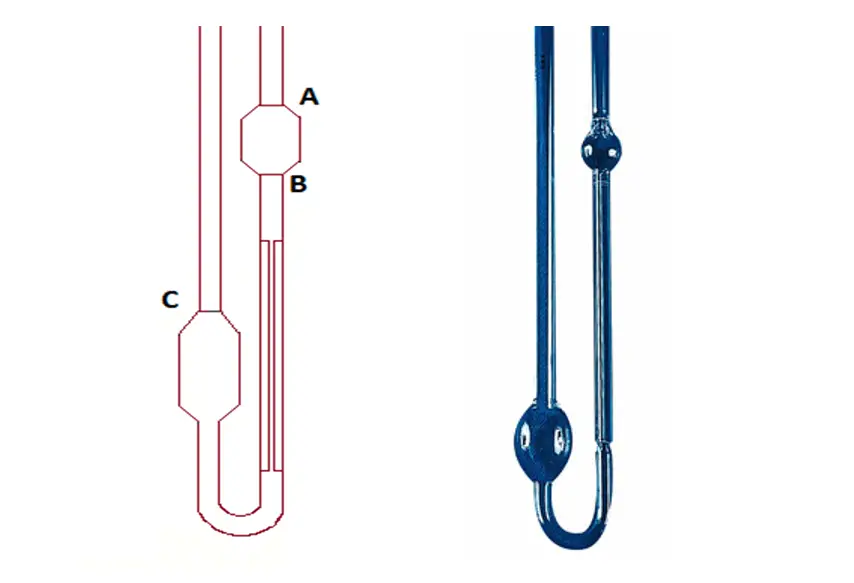
As the next step, the fluid passes through a capillary tube under the influence of its hydrostatic pressure. The time it takes for the fluid to pass from brand B to brand C through the capillary tube is recorded.
The time is multiplied by an instrument constant to find out the kinematic viscosity of the fluid:
Kinematic viscosity = constant * time
The time it takes for the fluid to pass through the capillary tube is directly proportional to the dynamic viscosity and inversely proportional to the density of the fluid, and, obtaining the expression:
Time = µ/ρ
Where:
µ = Dynamic viscosity.
ρ= Density of the fluid.
Because time is dependent on the density and also the viscosity of a fluid, a time of shearing reduces the viscosity.
Capillary tube measurements need to be restricted to fixed duration, it provides a direct reading of kinematic viscosity.
Rotational Viscometer
These types of viscometers are based on the principle that the force required to rotate an object immersed in a fluid can indicate the viscosity of the fluid.
These instruments consist of a cup containing the sample, which rotates at a rotational speed ω. In the liquid, there is a submerged cylinder representing a coaxial cylinder of height h and radius r1.
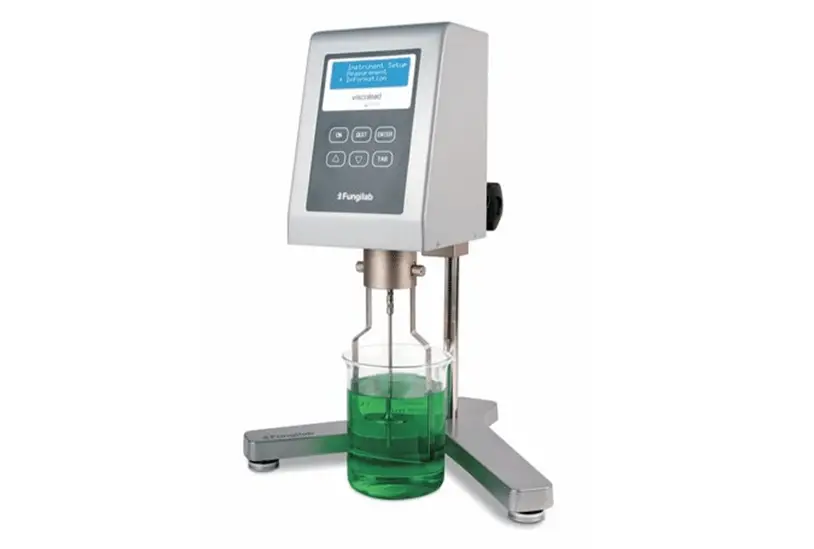
The inner cylinder is suspended by a torsion wire producing torque as a result of the viscous forces of the fluid rotating on it, achieving a steady state of motion.
In some instruments, the internal cylinder is rotating and the torque is measured in the cup, or, at constant applied torque, the resulting deformation is observed.
At a distance r from the center that torque is equal to:
T = 2 π * r 2 * h * F
Where
T = torque,
H = height of the internal cylinder, and
F = stress tensor at radius r.
Thus, from a torque measurement read, we can estimate the stress applied to the fluid.
Rotational viscometers can take various forms, and these are normally described in terms of their measurement systems, but the principle is the same for all.
Falling Ball Viscometer
It typically measures viscosity and is well suited for Newtonian fluids.
It consists of a container that contains a viscous fluid. Its operation is based on introducing a small sphere into the container inclined at a certain angle, which starts from rest and quickly reaches the limit speed. The time it takes to travel the distance L determines the viscosity of the liquid.
The drop time of the sphere will provide the viscosity of the fluid.
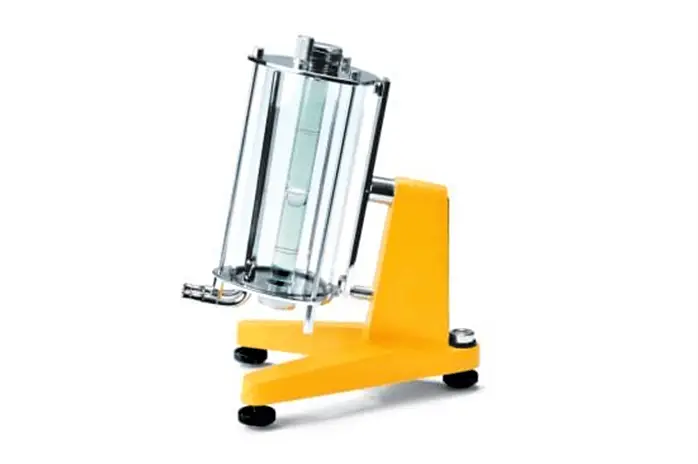
The variables involved in the measurement process are:
ρ1 Density of the solid sphere.
ρ2 Density of the liquid.
L Longitude that the sphere falls in time t.
V0 Limiting the speed of the sphere.
Taking into account the characteristics of each of the equipment used to measure the viscosity of Newtonian liquids, it is concluded that the ball viscometer is the most suitable equipment to develop and build, for the following reasons:
- The calculation of the viscosity is simple since it is obtained by measuring the time it takes for a body to pass through two points.
- The elements that take part in the measurement of the viscosity are few in comparison with other equipment, making its control more efficient.
Applications of Viscometer
Viscosity meters used mainly in the following sectors:
- Related to the mineral oil industry (oils, hydrocarbon liquids).
- Related to the food industry (sugar solutions, honey, beer, milk, gelatin, fruit juices).
- Related to chemical industry (polymer solutions, solvents, resin solutions, latex dispersions, and adhesive solutions).
- Cosmetic/pharmaceutical industry (glycerin, emulsions, suspensions, solutions, extracts).
- Petroleum industry (crude, machine oil, petroleum).
- Related to fuels (petroleum, diesel oil).
Advantages of Viscometer
Benefits of Viscosity measurement
- Viscosity is one of the most important process properties and critical parameters.
- Viscosity measurement helps to find out fluid characteristics, its behavior when in motion. It helps to size a pump, orifice meter, or pipeline.
- The viscosity of the fluid determines the quality of the finished product.
- Viscometers are used for various scientific research studies.


